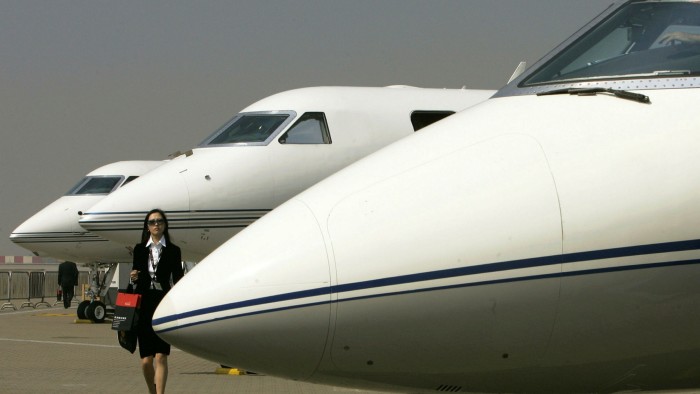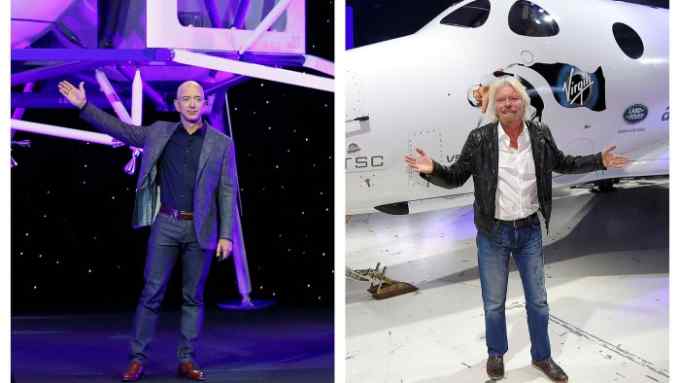Carbon counter: ESG activism will give mile-high snub to executive jets

Roula Khalaf, Editor of the FT, selects her favourite stories in this weekly newsletter.
Carbon counter is a series of Lex articles estimating the climate cost of different lifestyle choices. The other articles are here
Flying executives around the world in private planes does not chime well with company pledges for a low carbon future. Yet Facebook, Visa and others cannot seem to shake the habit. Chief executives like the convenience and privacy that private jets afford. There is also the incentive of avoiding fellow travellers who might have Covid-19.
Aviation consultancy WingX Advance data shows that on a seven day moving average basis, private flights have now recovered to 2019 levels. Commercial flights are still at about half the usual level.
Private jets such as the Gulfstream G650ER and Bombardier BD-700 Global Express impress fellow high-rollers. But they are both more expensive and more polluting than commercial air travel.
For those considering a summer trip, aviation consultancy RDC calculates that a flight of about 900 miles from London Heathrow to Ibiza on a typical Airbus A320 emits about 16.5 tonnes of CO2. If the flight is full this works out to just under 100kg of CO2 per seat.
Compare that to an eight-seater business jet, which would produce about 6 tonnes of CO2 over the same distance. Each passenger in the private plane would account for 750kg of CO2. The private jet passengers would still be responsible for more than twice the emissions of a first class passenger in a commercial plane, who take up the space of two or three economy seats.

Companies are aware that shareholders dislike executive jets. Until now, the focus has been on cost. In 2019, Emerson Electric’s fleet of private aircraft drew criticism from activist investor DE Shaw. Mark Watson left specialist insurer Argo Group after accusations of undisclosed perks including use of company money for his jet-set travels. Former General Electric chief executive Jeff Immelt generated headlines for travelling with two jets, one of them a back-up.
In an era of ESG activism, expect executive jets to become a serious embarrassment to public company owners. Previously, company spinners justified high financial costs with savings of time and stress for chief executives. Now, big carbon emissions are another black mark against corporate aircraft.
Carbon counter is a series of Lex articles that examine ways lifestyle choices can reduce readers’ carbon footprints. The rest are here.

Comments